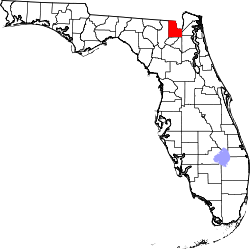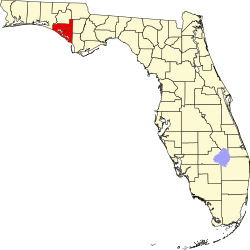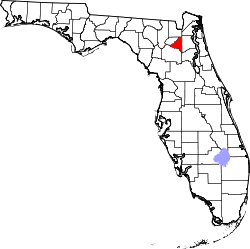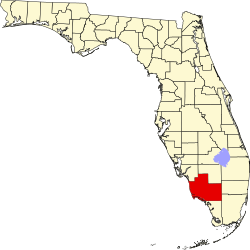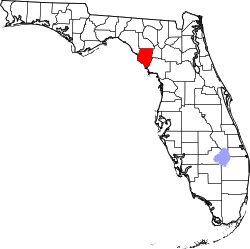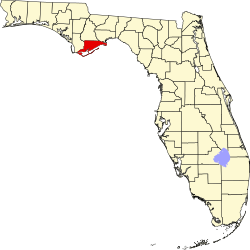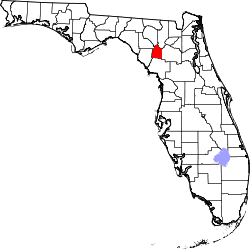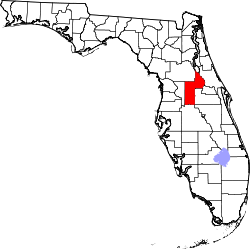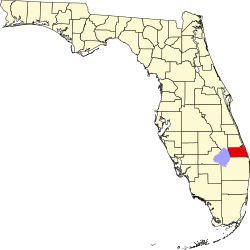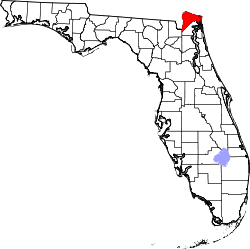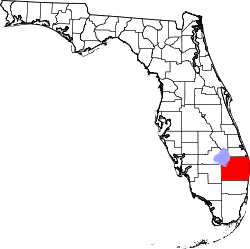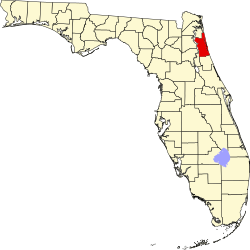| Counties of Florida | |
|---|---|
 | |
| Location | State of Florida |
| Number | 67 |
| Populations | 7,955 (Liberty) – 2,838,461 (Miami-Dade) |
| Areas | 240 square miles (620 km2) (Union) – 2,034 square miles (5,270 km2) (Palm Beach) |
| Government | |
| Subdivisions |
|


There are 67 counties in the U.S. state of Florida, which became a territory of the U.S. in 1821 with two counties complementing the provincial divisions retained as a Spanish territory, Escambia to the west and St. Johns to the east. The two counties were divided by the Suwannee River. All of the other counties were created later from these two original counties. Florida became the 27th U.S. state in 1845, and its last county was created in 1925 with the formation of Gilchrist County from a segment of Alachua County. [1] Florida's counties are subdivisions of the state government. Florida's most populous county is Miami-Dade County, the seventh most populous county in the nation, with a population of 2,701,767 as of the 2020 census. [2]
Contents
In 1968, counties gained the power to develop their own charters. [3] All but two of Florida's county seats are incorporated municipalities: the exceptions are Crawfordville, county seat of rural Wakulla County, [4] and East Naples, located outside Naples city limits in Collier County.
The names of Florida's counties reflect its cultural heritage. Some are named for Confederate political leaders and Spanish explorers, marking the influence of Spanish sovereignty, while others are named for Christian saints, Native American sites, as well as political leaders of the United States. Natural features of the region, including rivers, lakes and flora, are also commonly used for county names. Florida has counties named for participants on both sides of the Second Seminole War: Miami-Dade County is partially named for Francis L. Dade, a major in the U.S. Army at the time; Osceola County is named for the war's native Muscogee-Seminole resistance leader Osceola. [5]
Population figures are based on the 2024 vintage Census population estimates. The population of Florida is 23,372,215, an increase of 8.5% from 2020. The average population of Florida's counties is 348,839; Miami-Dade County is the most populous (2,838,461) and Liberty County is the least (7,955). The average land area is 805 sq mi (2,085 km2). The largest county is Collier County as per 2020 Census bureau of 1,998.32 sq mi.
The Federal Information Processing Standard (FIPS) is used by the U.S. government to uniquely identify counties and is provided for each entry. These codes link to the United States Census Bureau's "quick facts" for each county. Florida's FIPS code of 12 is used to distinguish from counties in other states. For example, Orange County's unique nationwide identifier is 12095. [6]
Under the Florida Constitution the state government has the power to create and abolish counties. Each county in Florida is required to have a county seat under the state constitution. [7]

